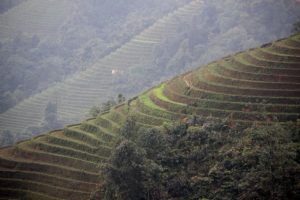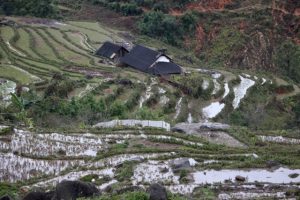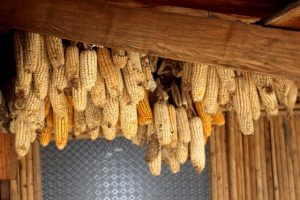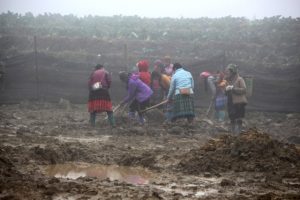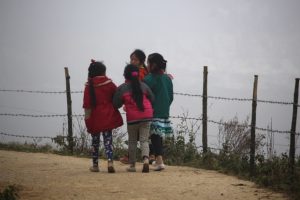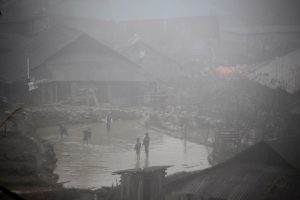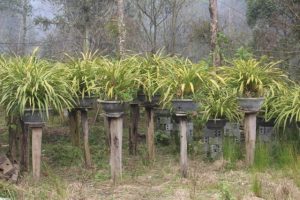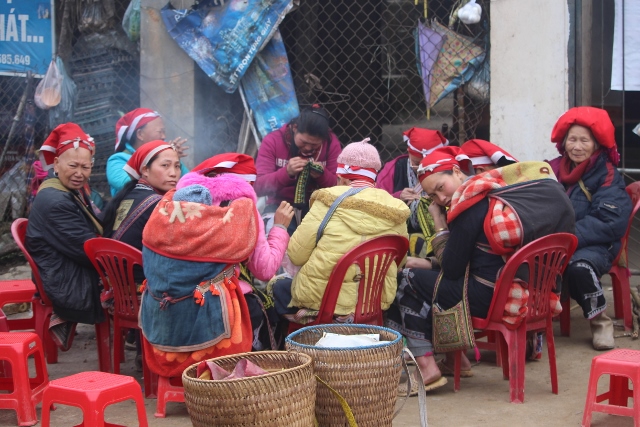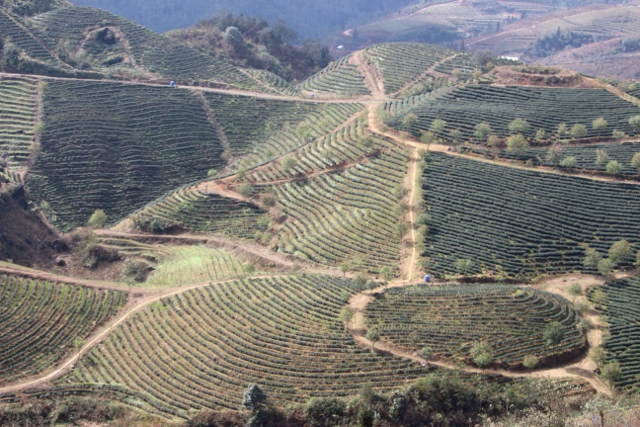The workings of the tourist trail around Sapa.
The thing about Sapa is its scenery outside town, something we hadn’t really appreciated yet because of the low clouds. But one day, driving in the direction of Lao Cai, we have more luck. Much of the fog has disappeared, and the rice paddy landscape unfolds after every bend in the road, steep terraces filled with water. With a bit of imagination we can even project some sunlight into the picture, and then you realise why all these tourists come to Sapa!
Filled with enthusiasm, we also book a walking tour, a sort of a one-day mini-track, past some of the ethnic minority villages and through the rice paddies. Our guide, an enterprising young lady, herself from the Hmong minority, picks us up from our hotel early one morning. In the mist – there is mist every morning, but the weather forecast for Sapa is sunny and dry, even relatively warm. My suggestion to wait for a while, see if the mist clears, she waves away: “if you wait for the sun to leave Sapa, you’ll never leave”. Right! It would have been nice if our guidebook had contained some text to that extent, then we might have reconsidered our travel itinerary – we do get a little fed up with the weather, to be honest.
We walk down from our hotel, to the small lake in the centre of Sapa – from which we cannot even see the other side -, and through some local suburbs, where some of the mud tracks are being replaced by concrete slabs. Which have just been laid, so we cannot walk there yet, are being forced into the even muddier side of the path. Concentrating on where we put our feet, we hardly notice that we have left town and are now walking through the countryside. Still on the muddy track. Still in the mist. Tall bamboo grows on the side of the path, indicating that behind, there are houses. Very occasionally, some rice paddies shimmer through the clouds, too.
A village appears, suddenly. On a clear they we could have seen in from far, but now we come upon it, in a flash. Wooden houses, with corrugated iron roofs. Waterbuffalos being fed, pigs, and the smallest piglets you have ever seen, scurrying around. Chickens, ducks, and lots of dogs, mostly good looking and well-nourished. But overall, this is a pretty poor place. Outside we do walk across the paddies, and lots of other agricultural fields, growing cash crops. Everything in the distance remains obscured.
The old woman who attached herself to our small group in Sapa, with a basket on her back, full of minority garments she is trying to sell to us, is being joined by two more ladies, with similar baskets on their backs, and similar intentions. Not much further we spot another small group, with two or three tourists and a guide. And with another two ladies with baskets on their backs. Obviously walking the same route.
Around 12, we arrive in a small village, this time with lots of more modern houses, a garment sewing place, and a few restaurants. We choose a table upstairs, with a good view. Of the insistent fog. And of many more small tourist groups, all with a guide and a few women with baskets, that appear out of the clouds covering the track. Slowly, the restaurant fills up. With tourists. This idea of an adventurous walk through distant villages and remote rice paddies needs some readjustment. This is a major tourist highway, everybody walks this walk, and in the same direction. Imagine how this will be in the high season. Or if the mist dissolves and you could see the whole path!
In the end the scenery never becomes like the spectacular photos we see in the brochures and on the walls of the hotels. You just need to be lucky for that, I think. But it is nice to be outside, walk for most of the day, wander through the different villages, of Hmong and of Red Dao; see the differences between those who do, and those who obviously don’t benefit from the tourist industry. When we arrive at the end of the trail, our guide effortlessly picks out our minibus amongst the many other minibuses, for our transport back to Sapa. Where we arrive half an hour later. In bright sunshine!
next: the first market in Muong Hum


